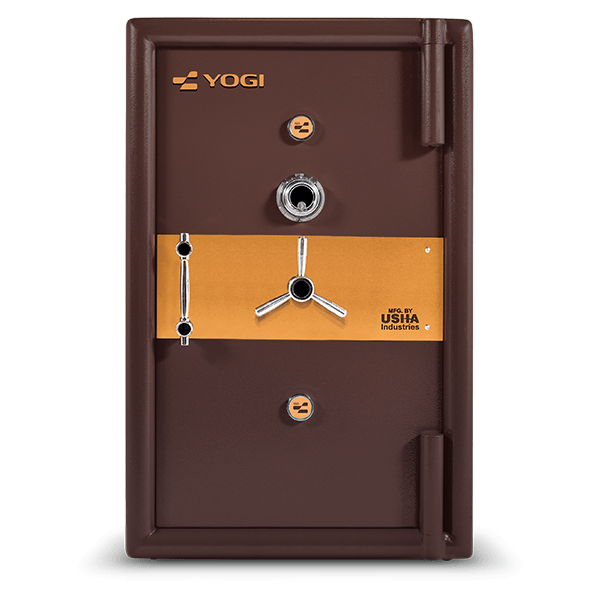Blog

Burglar Rating Explained: Understanding Safe Security Levels
Imagine this: a single determined thief with a crowbar, a drill, and five minutes of privacy. Will your safe stand its ground, or will your valuables become a statistic? The answer lies in a number—your safe’s burglar rating. For entrepreneurs and business owners, especially those just starting out, understanding these ratings isn’t just a technicality—it’s a crucial competitive edge. Let’s decode the world of burglar ratings, where every minute and millimeter of steel can mean the difference between security and vulnerability.
The Fundamentals of Safe Security: What Is a Burglar Rating?
Contents
- 1 The Fundamentals of Safe Security: What Is a Burglar Rating?
- 2 The Evolution of Safe Security Standards
- 3 Decoding the Major Safe Rating Systems
- 4 Global and Regional Standards
- 5 How Burglar Ratings Are Determined: Testing, Construction, and Certification?
- 6 The Spectrum of Safe Security Levels: From Basic to High-Security
- 7 The Pinnacle: For the Most Demanding Applications
- 8 Matching Security Levels to Real-World Needs
- 9 The Yogi Safe Approach: Setting the Benchmark for Quality and Security
- 10 Innovations and Trends in Safe Security
- 11 Making an Informed Choice: Practical Guidance for Buyers
- 12 Conclusion: Empowering Your Security Decisions with Knowledge
A burglar rating is more than a label—it’s a promise. It tells you, with scientific precision, how much punishment a safe can take before it yields to a break-in attempt. Ratings are determined by a combination of construction standards and rigorous, real-world testing. Think of it as the “stress test” for your safe: how long can it withstand attacks with common tools, power tools, or even fire?
The world of safe ratings is surprisingly nuanced. There are construction-based ratings, which focus on the thickness and quality of the safe’s walls and doors, and performance-based ratings, which are earned through brutal laboratory tests simulating actual break-in attempts. The higher the rating, the more sophisticated and prolonged the attack a safe can resist. This isn’t just about keeping out the casual thief—at the top end, it’s about outsmarting professionals armed with drills, grinders, and years of experience.
The Evolution of Safe Security Standards
The history of safe ratings is a tale of cat and mouse—each breakthrough in burglary tactics has sparked a leap in defensive technology. In the early 20th century, safes were rated simply by the thickness of their steel. But as criminals armed themselves with better tools, the industry responded with new standards and certifications.
A pivotal moment came with the rise of third-party testing laboratories, most notably Underwriters Laboratories (UL) in the United States and the Loss Prevention Certification Board (LPCB) in the UK. These organizations didn’t just take manufacturers at their word; they subjected safes to relentless, standardized attacks. The result? A new era of trust and transparency, where a safe’s rating was earned, not claimed.
Today, Indian standards such as IS 11188 for strong room doors have joined the global conversation, ensuring that high-security products meet the unique demands of local businesses and regulations. As one industry expert put it, “A safe is only as good as its certification—and its ability to withstand the tools of tomorrow.”
Decoding the Major Safe Rating Systems
The Two Pillars: Construction and Performance
There are two main methods for rating a safe’s ability to resist burglary:
- Construction Ratings: These focus on the physical build—how thick is the steel? How robust are the locks? B-rated and C-rated safes are classic examples, with B-rated safes typically featuring 1/4″ steel walls and 1/2″ doors, and C-rated safes upping the ante with 1/2″ steel walls and 1″ doors. E-rated safes go further, closely approaching the formidable TL-15 standard.
- Test Performance Ratings: Here, the safe is subjected to live attacks using specific tools for set durations. The most recognized are the UL TL-series (e.g., TL-15, TL-30), where the number indicates how many minutes the safe can withstand a full-on assault. Only safes rated RSC I and above are independently tested and verified by a third-party facility.
Global and Regional Standards
- Underwriters Laboratories (UL): The gold standard in North America, with ratings like RSC I, TL-15, TL-30, and TL-30X6. For example, a TL-15 safe must withstand a 15-minute attack with a wide array of tools, while a TL-30X6 must resist a 30-minute attack on all six sides.
- LPCB’s LPS 1175 (UK): Categorizes products from SR1 to SR8, with SR8 representing the highest level of resistance—withstanding a 20-minute assault with advanced tools like hydraulic jacks and diamond-core drills.
- Indian Standards (IS 11188): Focuses on strong room doors for high-risk environments, ensuring resistance against both fire and burglary, with classifications like Class B and Class C.
How Burglar Ratings Are Determined: Testing, Construction, and Certification?
What does it take for a safe to earn its stripes? The answer is a gauntlet of tests, each designed to simulate the tactics of real-world criminals.
- Construction: The first line of defense is the safe’s physical build. Thicker steel, reinforced doors, and complex locking mechanisms all contribute to a higher rating. For example, a B-rated safe must have at least a 1/4-inch body and a 1/2-inch door, while a C-rated safe demands even more.
- Testing: Performance ratings are where things get intense. Underwriters Laboratories, for instance, will unleash a team of experts equipped with everything from crowbars and sledgehammers to high-powered drills. The clock starts ticking, and the safe must survive for the specified duration—five minutes for RSC I, 15 for TL-15, and so on.
- Certification: Only after passing these trials does a safe receive its official rating. “Only RSC I and above ratings are independently tested and verified by a third-party testing facility,” notes one industry authority. This independent verification is your guarantee that a safe’s claims aren’t just marketing—they’re proven.
The Spectrum of Safe Security Levels: From Basic to High-Security
Let’s break down the most common ratings and what they mean for your security strategy.
Entry-Level: Keeping Honest People Honest
- No Rating: Basic lockboxes and cabinets. Suitable only for deterring casual snoopers—recommended for values up to $1,000.
- B-Rated: 1/4″ steel sides, 1/2″ door. No formal testing, but a solid step up. Recommended for up to $10,000 in valuables.
Mid-Tier: Real Resistance
- C-Rated: 1/2″ thick sides, 1″ thick door. Still not tested, but formidable. Suitable for up to $20,000.
- E-Rated: Similar to TL-15 in construction, recommended for up to $35,000.
Independently Tested: The Gold Standard
- RSC I: Withstands a 5-minute attack with hand tools. Certified. Recommended for up to $20,000.
- RSC II: 10-minute attack by two people, wider variety of tools. Up to $75,000.
- TL-15: 15-minute attack, broad toolset. $75,000.
- TL-30: 30-minute attack, even more tools. $175,000.
- TL-30X6: 30-minute attack on all six sides. $500,000+.
The Pinnacle: For the Most Demanding Applications
- TRTL-60X6: Sixty minutes, all sides, and includes torch resistance. This is the fortress level.
As you move up the ladder, you’re not just buying time—you’re buying peace of mind. For those securing high-value assets or sensitive data, these upper-tier safes are non-negotiable.
Matching Security Levels to Real-World Needs
How do you choose the right rating? It’s all about risk assessment. Consider:
- The value and sensitivity of what you’re protecting.
- The environment (home, retail, bank, or high-risk business).
- Insurance requirements—many policies specify minimum ratings for coverage.
- The threat profile: Are you worried about opportunistic thieves or professional criminals?
For instance, a startup jeweler might opt for a C-rated safe, while a financial firm handling large cash reserves would demand a TL-30 or higher. If you’re exploring options for high-value storage, check out our insights on “High Security Burglar Fire Safes” for a deep dive into advanced protection.
The Yogi Safe Approach: Setting the Benchmark for Quality and Security
At Yogi Safe, we believe that security is a science—and an art. Our commitment goes beyond meeting industry standards; we aim to set them. Every Yogi Safe product is engineered with a relentless focus on real-world threats, drawing on the latest research and feedback from security professionals.
Our strong room doors, for example, are certified under IS 11188, offering torch and tool resistance with fire protection—ideal for high-risk businesses such as banks and jewelers. We’re not just manufacturers; we’re partners in your security journey. If you’re interested in large-scale protection, our “Strong Room Doors Manufacturer” blog explores how we design and certify solutions for the most demanding environments.
Innovations and Trends in Safe Security
The safe industry is in the midst of a revolution. Today’s burglars have access to power tools that would have been unthinkable a decade ago—and manufacturers are responding with new materials, smart locks, and biometric authentication.
Recent trends include:
- Biometric Access: Fingerprint and facial recognition systems are making safes both more secure and more convenient.
- Smart Monitoring: IoT-enabled safes can alert you (and the authorities) the moment an unauthorized attempt is detected.
- Hybrid Protection: Combining burglar and fire resistance is now standard for premium safes, as highlighted in our “Heavy Fire Proof Safe Locker For Home” blog.
As one security analyst recently observed, “The future of safes isn’t just about steel—it’s about intelligence. The next generation of protection will be proactive, not just reactive.”
Making an Informed Choice: Practical Guidance for Buyers
Choosing the right safe is a strategic decision. Here’s a quick checklist to guide your process:
1. Assess Your Risk Profile
- What’s at stake: cash, documents, data, or irreplaceable items?
- Who are your likely adversaries: opportunists or professionals?
2. Match Rating to Need
- For home use: RSC I or C-rated may suffice.
- For business or high-value assets: TL-15 and above are recommended.
- For high-risk environments: Consider strong room doors certified to IS 11188 or LPS 1175 SR4 and above.
3. Consider Fire and Burglar Resistance
- Dual-rated safes offer comprehensive protection.
4. Verify Certification
- Always choose products with independent, third-party certification.
5. Plan for the Future
- As your business grows, your security needs will evolve. Invest in scalable solutions.
Conclusion: Empowering Your Security Decisions with Knowledge
In the end, a safe is more than a box—it’s a bulwark against chaos, a statement of intent, and a cornerstone of your business’s resilience. By understanding burglar ratings, you’re not just buying steel and locks; you’re investing in confidence, continuity, and peace of mind. The best entrepreneurs don’t just protect their assets—they anticipate threats, adapt to change, and demand the highest standards. In the world of security, knowledge isn’t just power—it’s protection.





